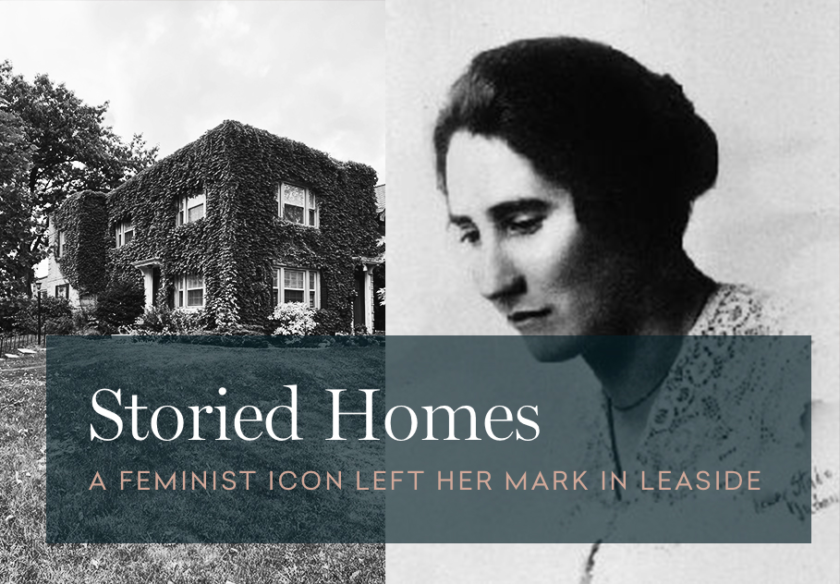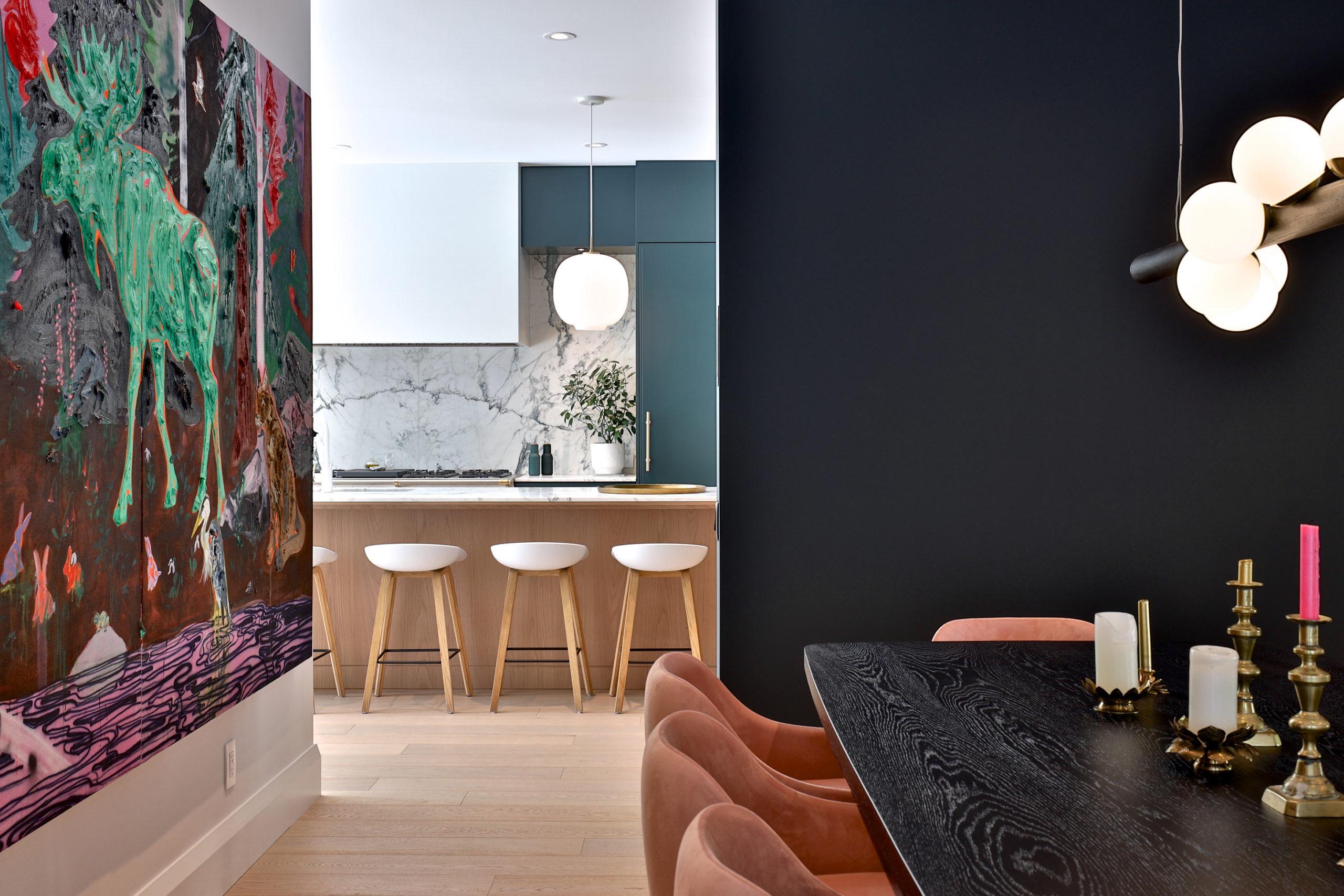
Every home tells a story. Sometimes it begins to reveal itself before you even realize what is happening. Such was the case with 720 Millwood Road.
Having just landed at the Heaps Estrin office in September, I began to explore the neighbourhood by walking the streets of Leaside. While the area provided no shortage of routes to explore, I kept finding myself taking note of one house in particular.
Perched on a slight rise of land on Millwood just east of Bayview is a quaint, flat-roofed yellow-brick house with an ivy-covered exterior – a house that might be easy to miss if not for the large plaque on the lawn, or the brief show of colour that ivy puts on in the fall.

Alex Corey
As October eased into November, and as the ivy fell away, I watched as the house began to slowly present itself – subtle corner quoins, brick string coursing, hexagonal windows and deco-esque door frames – an understated modern gem in Leaside, hidden in plain sight! So how did a modern Art Deco-inspired house find its way into the heart of Leaside, and what was that plaque doing on its front lawn?
The Leaside we know today was primarily developed between the late 1920s and the post-World War II years and is arguably one of Toronto’s best examples of a “Garden City” – an early 20th century urban planning movement that promoted holistic communities where residents could work, live and play. While impacted somewhat by the Great Depression, the appeal of this idyllic neighbourhood ultimately persevered through the 1930s – a decade that saw the population grow from 600 to more than 5,000. It was at the tail end of these boom years that a speculative developer built and rented out the duplex at 720 Millwood Road, however, it would be another ten years before its most famous resident would move in.
Born in 1890 in Grey County, Ontario, Agnes Campbell MacPhail grew up in a log cabin near the town of Hopeville and began her working life as a teacher before cutting her political teeth in the cooperative farm movement. At only 24 years of age, MacPhail was invited to join the United Farmers of Ontario, which ultimately led, in 1921 (just three years after women won the right to vote in federal elections), to her successful run as federal candidate for Grey Bruce and made her the first woman elected to Canada’s House of Commons.
“I tried to be natural, to say what I thought sincerely, to abide by my own standards. That sums up the most important advice I can pass on to women today.”
A progressive and pacifist through-and-through, by the late 1920s MacPhail “emerged as the country’s foremost advocate of women’s equality based on fundamental human rights.” She was invited to sit as Canada’s representative at the League of Nations (the precursor to the United Nations) and was a committed leader in prison reform.

Grey Highlands Public Library & Canadian Encyclopedia (sourced from Library and Archives Canada)
Defeated in federal politics in 1940, it didn’t take long for MacPhail to find her footing at the provincial level, winning a seat at Queen’s Park for the riding of York East – a large region that included the community of Leaside. It was during this period, in 1948, that she purchased the duplex at 720 Millwood Road. Despite her political successes, MacPhail came from a humble background and with a limited income she decided to live on the upper floor, renting out the main floor of the house to tenants.
Although she only lived in Leaside for a few short years before passing away in 1954, MacPhail left her mark on the neighbourhood and a lasting legacy in the community thanks to her strong spirit of charity. Never one to self-promote with photo-ops or soap boxes, we’re left instead with records of her contributions to the Leaside community, such as her annual participation in the Leaside Lions’ raffle, or memories of neighbours crossing paths with her on Saturdays while shopping on Bayview. Her house – though unique – reflects the quiet, almost quintessentially Canadian humility that she embodied so well – a home built of Toronto’s distinctive yellow brick (one of the last few built from bricks sourced from the old Yorkville brickworks), but designed in a forward-looking and progressive style.
In 1954, still in office but without a pension, MacPhail passed away and the house at 720 Millwood was sold. Over the years the home has been loved and cherished by generations of Leaside residents, culminating in 2012 with its inclusion on the City of Toronto’s Heritage Register.
Over the next few months, as I continue my walks through Leaside and past this house getting to know the neighbourhood, I’ll be thinking about Agnes MacPhail’s connection to this community and our city, before the house once again conceals itself, draped behind its ivy curtain.
About the Author

Alex Corey’s passion for real estate is grounded in an appreciation for home, history and community. He brings 10 years of experience in architecture and heritage conservation to his current position in real estate with the Heaps Estrin Team, and holds a master’s degree from Columbia University in historic preservation.
Growing up in Rosedale and Moore Park, Alex developed a fascination with the area’s houses and streets, a passion and admiration that has since extended to neighbourhoods across Toronto. He can often be found exploring Toronto’s ravines, walking with his dog, Billie, in his neighbourhood of Cabbagetown or seeking out the city’s hidden historic gems.


